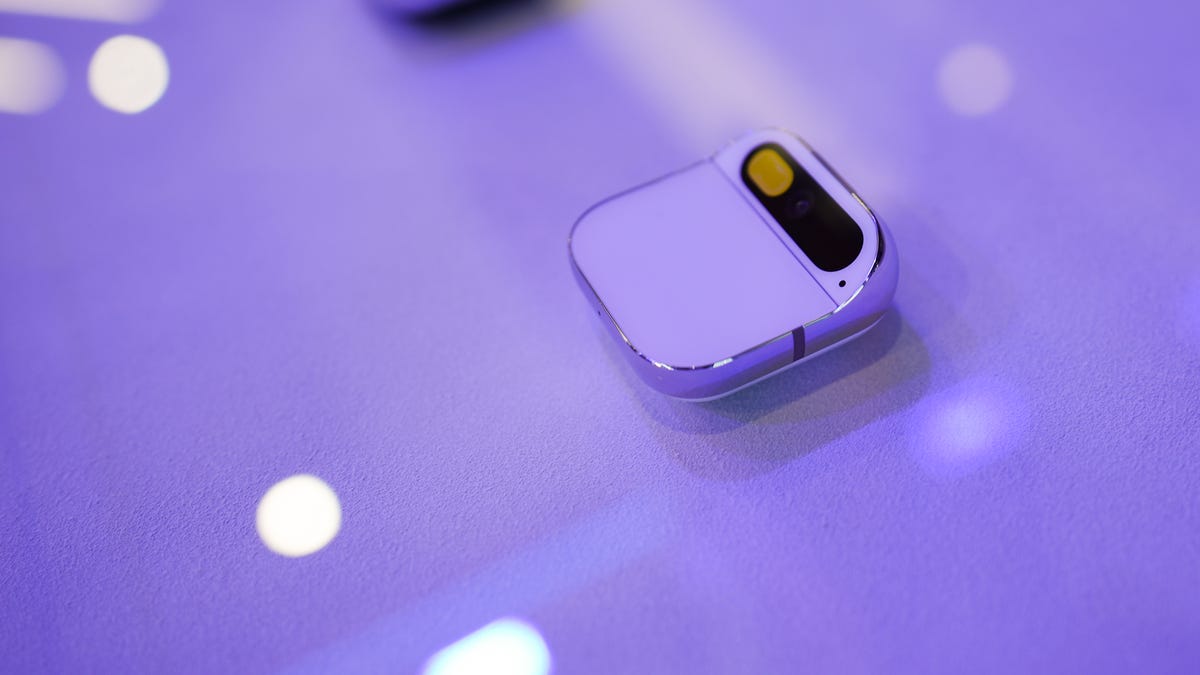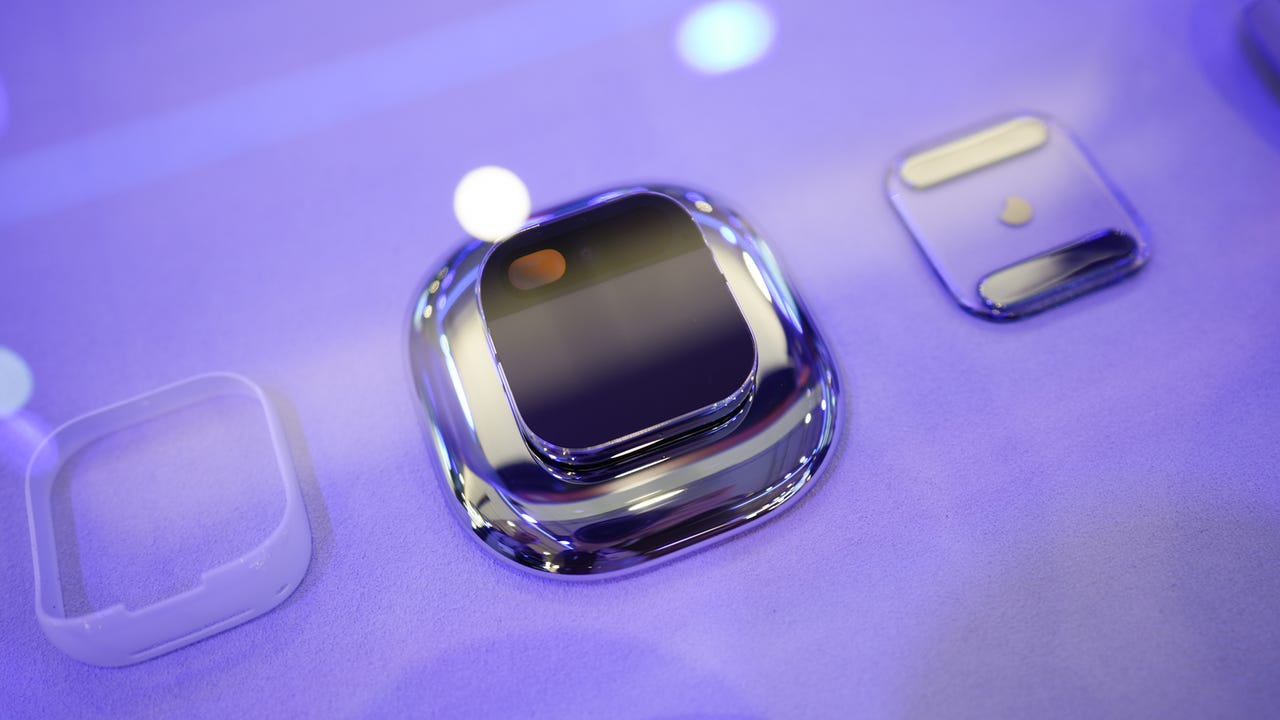

Final week, startup Humane seeded its long-awaited Ai Pin to reviewers and influencers, and the response has been overwhelmingly underwhelming. Most notable was the overview from Marques Brownlee (aka MKBHD), who — with 18 million followers on YouTube and 6.2 million followers on X — referred to as Humane’s AI pin “the brand new worst product I believe I’ve ever reviewed, in its present state… this factor is unhealthy at nearly the whole lot it does, mainly on a regular basis.”
Additionally: Humane Ai Pin evaluations: 5 takeaways on a promising however dangerously flawed wearable
The principle complaints from Brownlee and different evaluations focus not on the {hardware} itself — the Pin seems well-built — however on the utility and efficiency of the system. Listed here are among the ways in which the Ai Pin falls quick:
- Idea versus execution: The Ai Pin is an modern wearable AI assistant that features independently and has high-quality {hardware}. Nonetheless, it suffers from vital performance points, together with sluggish responses and incorrect solutions.
- Challenges with consumer interface: The system’s novel gesture-based management and sophistication 2 monochrome inexperienced laser projector interface aren’t user-friendly in numerous circumstances, require a steep studying curve, and are troublesome to see in shiny environments.
- Reliability issues: The Ai Pin has poor battery life and overheating points, which necessitate frequent costs and trigger discomfort.
- Restricted compatibility: The system lacks integration with smartphones and standard apps, limiting its sensible utility regardless of its standalone nature.
- Price and worth: Given its restricted performance in comparison with trendy smartphones, the Ai Pin’s excessive worth and extra subscription charges are exhausting to justify.
- Future potential versus present limitations: Though aiming to scale back display time, the Ai Pin’s present limitations make it unappealing in comparison with the excellent capabilities of smartphones.
It’s unclear whether or not Humane can enhance the efficiency and reliability of the present system with embedded firmware updates and back-end software program growth. Sure facets of the {hardware} — such because the difficulties of utilizing the laser projector beneath numerous lighting conditions– may restrict efficiency, and different constraints may solely permit for slight incremental enhancements.
The problems with battery charging and overheating will not be solvable with the present {hardware} both.
The connectivity downside
Nonetheless, there could also be just a few issues that Humane can do. Let’s begin with the connectivity response time.
The system makes use of 4G LTE knowledge supplied by T-Cellular. That is wonderful for well-connected areas, but when you do not have protection, as with every cell system, it turns into a roaming problem (supplied Humane’s contract with T-Cellular permits for roaming). Not each space has good wi-fi protection throughout a number of suppliers.
Additionally: What’s Wi-Fi 7 and simply how briskly is it?
Additionally, there’s the problem of connectivity degradation to slower entry speeds on 4G networks if you find yourself in a extremely congested space; that is one purpose carriers have spent a lot cash on 5G deployments — to cope with congestion points in city areas.
For wearables to perform correctly, they require dependable knowledge connections. The Humane Pin affords dual-frequency Wi-Fi, outfitted with each 2.4Ghz and 5Ghz antennae. Nonetheless, it’s nearly ineffective as a result of restricted availability of suitable Wi-Fi networks. The system struggles to authenticate with public Wi-Fi networks (reminiscent of these requiring internet portals for authentication), together with most networks exterior your house — airports, airplanes, cafes, eating places, and workplaces.
Even a easy password-type connection to a broadcast SSID is usually a ache. Humane’s documentation says that becoming a member of a Wi-Fi community requires voice and laser UX intervention or a QR code (that you simply’re presupposed to print out so the Ai Pin’s digital camera can see it).
Additionally: The most effective hotspots you should purchase
Oh, and T-Cellular public hotspots? Good luck with that — they do not exist. AT&T and Verizon have these, as do many broadband suppliers like Comcast Xfinity, however… the Pin cannot entry them.
Can you utilize your 5G smartphone as a hotspot? Sure, you’ll be able to — however that defeats the aim of paying Humane $25/month for 4G service.
By way of unbiased knowledge connectivity, it will make much more sense if the Humane Pin might use any supplier’s eSIM (assuming its 4G LTE radio labored with any US supplier because the iPhone and most Android telephones do), and you possibly can pay the everyday $15 monthly smartwatch charge to no matter provider you need.
After all, the $25 charge additionally covers cloud storage to your movies and images, GenAI computing, and different infrastructure prices. However that could possibly be knocked down no less than $10 if the system was Wi-Fi-only or might make the most of your present supplier.
Additionally: Apple Watch Collection 9 overview: Why I am not settling for the cheaper fashions
To repair the Wi-Fi downside, the system wants passthrough-style authentication — just like how the iPhone works with the Apple Watch — by way of Bluetooth to a smartphone. After all, this could require the event of a smartphone app, no less than a minimal one to work across the connectivity issues.
My iPhone can retailer many Wi-Fi networks (that I’ve authenticated) in its reminiscence. Utilizing Bluetooth, it passes these to my Apple Watch, and that is fully clear to me. That is precisely what the Pin wants.
4G and Wi-Fi aren’t the one reply for wearable connectivity
Wi-Fi, nevertheless, is power-hungry, even with low-power transceiver implementations. A potential answer for future Pin {hardware} could be to incorporate Matter, an IoT connectivity commonplace adopted by many distributors, together with Apple, Amazon, Google, and Samsung. Matter allows sensible residence merchandise from completely different producers to work collectively by offering a common language for wi-fi (and wired) IoT gadgets.
Additionally: Every little thing you must construct out a wise residence
Wi-fi Matter gadgets can join with one another utilizing Zigbee’s wi-fi protocol. Sensible residence bridges reminiscent of Amazon Echo, Amazon eero, Philips Hue, Apple TV 4K, Apple HomePod, and different gadgets with Matter and Zigbee built-in can be utilized for this goal. Zigbee helps knowledge charges of as much as 250 kbps at 2.4 GHz and 40 kbps at 915 MHz in North America and has a variety of as much as 100 meters. Zigbee’s repeaters and mesh networking capabilities can prolong that sign vary drastically. Amazon’s Sidewalk is one instance of a long-range mesh community that makes use of 915 MHz Zigbee and Bluetooth Low Power, a mixture that additionally could possibly be used for the Pin.
Matter’s knowledge transmission speeds will not be as quick as Wi-Fi for transferring giant quantities of information (reminiscent of images and movies to cloud storage), however as a side-channel communications mechanism for text-based LLM queries and sensor knowledge on wearable gadgets, it makes lots of sense.
The LLM and cloud provisioning dilemma
Nonetheless, not the entire system’s slowness may be attributed to connectivity. The question response from Humane’s AI can also be stated to be sluggish and unreliable, and that is in all probability as a result of underprovisioned cloud assets. The pin’s back-end GenAI LLM is apparently OpenAI. It’s unclear whether or not it makes use of GPT4 or GPT 3.5, nevertheless it should be accomplished by way of an API name.
It is unlikely the pin is doing direct API calls to OpenAI on Azure. It is extra seemingly that the queries shall be proxied, and immediate modifications shall be accomplished by cloud infrastructure working on any variety of suppliers, reminiscent of Azure OpenAI (very seemingly), AWS, or Google Cloud. Relying on how effectively that’s provisioned, it should contribute to the service’s general efficiency.
Additionally: GPT-4 Turbo reclaims the ‘greatest AI mannequin’ crown from Anthropic’s Claude 3
Here is the query: Is it smart to limit the Pin to OpenAI/ChatGPT? Different LLMs are at the moment being developed, together with Meta’s LLAMA2, Google Gemini, and Amazon Titan. AI developments are coming quick and livid, with fashions rising in parameter measurement a number of occasions a yr. Competitors amongst these fashions is intense. An AI-driven product, one not confined to any explicit ecosystem, needs to be service-agnostic and have entry to the best-of-breed mannequin at any time and to whichever LLM the consumer prefers.
Can the Pin be mounted – or will rivals capitalize on Humane’s failure?
Standing on the crossroads of innovation and practicality, Humane’s Ai Pin marks a daring foray into the way forward for wearable expertise. Nonetheless, its path ahead — from a groundbreaking idea to an important system — shall be troublesome. The problems of connectivity, consumer interface, and general utility underscore a divergence between Humane’s visionary ambitions and the sensible expectations of its consumer base.
Humane should improve — urgently — the Ai Pin’s efficiency to slim this divide. Enhancements embrace enhancing connectivity with updates like eSIM assist and extra subtle WiFi options; making the consumer interface extra accessible; and boosting cloud service resiliency. Adopting IoT requirements like Matter might additional combine the Ai Pin into the broader digital ecosystem, enhancing its versatility and enchantment.
Additionally: Limitless’ $99 AI wearable to guarantees to recollect your conferences and, effectively, the whole lot else
Nonetheless, Humane shouldn’t be working in a vacuum. Tech giants reminiscent of Apple, Amazon, and Google — with their huge assets, established system ecosystems, and superior GenAI cloud capabilities — are well-positioned to capitalize on any stumbles by Humane. These tech giants have the experience and infrastructure to swiftly implement comparable improvements, doubtlessly refining and integrating wearable AI applied sciences into their product strains extra efficiently. Their established consumer base and sturdy cloud providers might permit them to outpace Humane by delivering extra polished, user-friendly options that align extra carefully with shopper expectations.
Because the panorama of private expertise continues to evolve, the strain is on Humane to iterate and enhance the Ai Pin quickly. If they’ll reply successfully to consumer suggestions and refine their product, they nonetheless have an opportunity to compete on this dynamic market. In any other case, they threat being overshadowed as rivals like Apple, Amazon, and Google leverage their technological prowess to seize the creativeness and belief of shoppers in search of the subsequent huge factor in wearable tech.